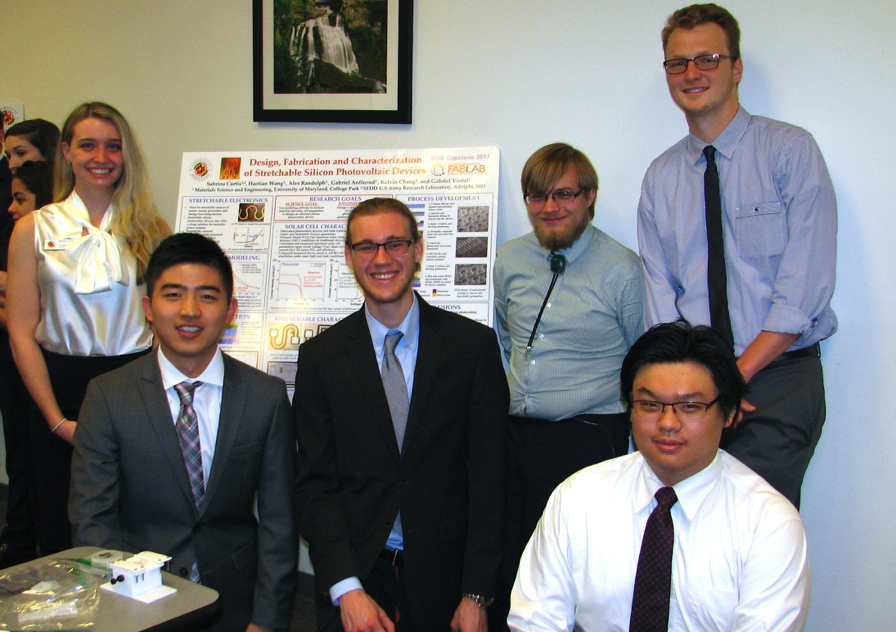News Story
MSE Students Selected as Finalists for the 2017 Collegiate Inventors Competition

From left to right: Sabrina Curtis, Haotian Wang, Alex Randolph, Gabriel Vostal, Gabriel Anfinrud, Kai Wen Kelvin Chang.
A team from the University of Maryland (UMD) Department of Materials Science and Engineering (MSE) has been selected as finalists for the 2017 Collegiate Inventors Competition for their invention of Stretchable Silicon Photovoltaics.
Sabrina Curtis, a MSE master’s student, interning at the U.S. Army Research Laboratory, was the invention originator - she pitched the idea for her Advanced Micro-fabrication course, taught by MSE Professor Gary Rubloff during the fall 2016 semester. Curtis and classmates Alex Randolph, Haotian Wang, Maria Pascal, Julia Downing and Joseph Ayoub developed the initial prototype fabrication. Stretchable Silicon Photovoltaics is a new design for silicon solar cells that enable their use as a wearable device.
“The average U.S. soldier carries about 16 pounds of batteries while in the field," said Curtis. "Our group at the Army is interested in developing stretchable power devices for wearable electronics. Our Stretchable Photovoltaics are a way to enable renewable wearable power, which would allow convenient charging of smart electronics directly from your clothes.”
The project’s initial success allowed for its continuation as a 2017 Capstone Senior Design project (offered by MSE Professor and Chair, Raymond Phaneuf), and gave way to its admission into the Collegiate Inventors Competition.
The Competition, which targets college-level inventors and encourages entrepreneurship, was founded by the National Inventors Hall of Fame and sponsored by the U.S. Patent and Trademark Office. Hundreds of students from across the country apply each year and this year the MSE team - Sabrina Curtis, Alex Randolph, Haotian Wang and Gabriel Anfinrud - was selected as one of six finalists.
The 2017 Competition will take place November 1-3, at the U.S. Patent and Trademark Office in Alexandria, Virginia. Gold, silver and bronze prizes of up to $10,000 will be awarded in support of patenting the ideas.
Curtis added, “I’d like to thank John Abrahams, John Hummel, Tom Loughrah and Mark Lecates of the UMD Nanocenter without whom this project would not have been possible!”
Update article in The Diamondback:
The University of Maryland team's solar cell is thinner than a human hair - Nov. 8, 2017
Published September 25, 2017









